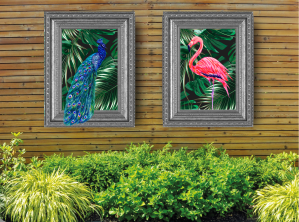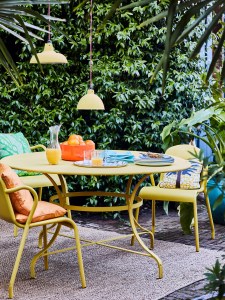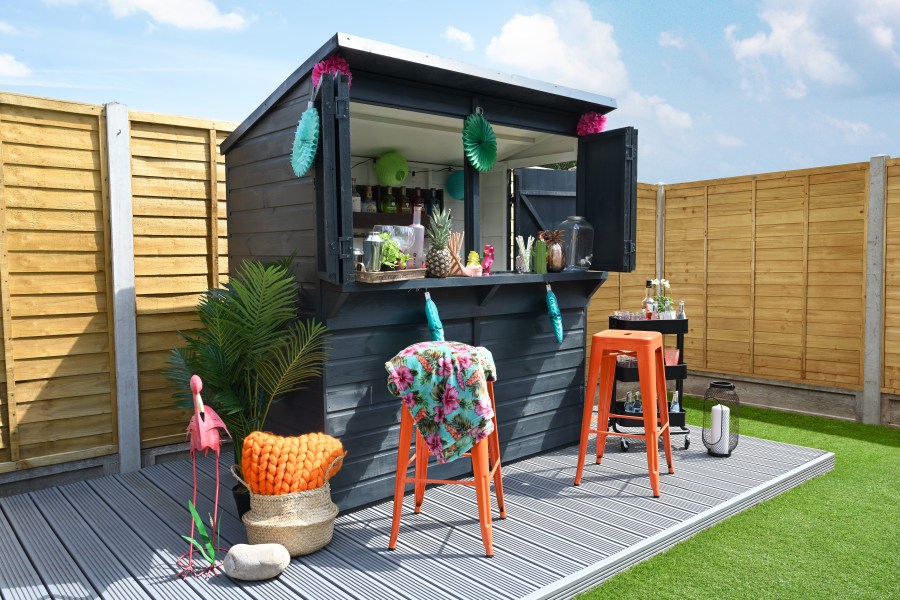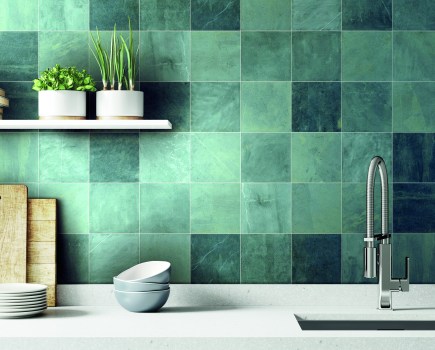Get out your brush and brighten up your coastal gardens while you wait for the summer blooms to show their faces, advises interiors writer CAROL BURNS.
If the weather follows the rules, May should be the time for dipping our toes into outdoor living. And this month is the perfect time to get everything ready for a long hot summer – and that means spending plenty of time outdoors, even if the sun isn’t shining as we might like.
A garden designer once opined that our garden is probably our biggest room. Yet we don’t tend to give it the same time, effort – and often money – that it deserves. And like the kitchen, living room and bedroom, gardens are susceptible to trends in colour, furniture, floor coverings and even lighting and heating.
Worst of all, they get the wear and tear of our changeable climate every year – but don’t despair and work out the cost of yet more new garden furniture. It’s amazing what you can do with a pot (or few) of paint.
Most of the colour in coastal gardens probably comes from the plants and flowers – and the most common colour is obvious. Green is everywhere you look, the grass, leafy shrubs and the setting for all those lovely colourful flowers.
For this reason, it makes sense to paint the eyesores in your garden green. Go further and create something in camouflage with a few different tones of green and some old sponges (it’s also a great messy project to keep any bored kids on half-term busy).
Stay away from white unless you want to get out your brush several times a year. It yellows, shows every speck of soil out of place and tends to showcase moss or algae. If you have to have those gleaming clean white planters to show off your ornamental grasses, go for softer chalky matt whites or consider a white stain instead of a paint.

In today’s world, it is unforgivable to give your shed and fence a lick of creosote when you could be adding colour with the same effort – and paints are less of an assault on the olfactory glands. Try using different hues of blue and alternate the planks in your fence – or go more vivid for a deck chair vibe.
If you are painting a fence behind a flower bed, think about what planting will sit in front of it to decide your colour. Metallic paints can add a spot of reflective glamour on walls – or you can get outdoor mirrors to hang (make sure they are suited to outdoor use).
Brick walls and scruffy bits of patio can also be decorated using leftover tiles from the house – create a mosaic if you are feeling really crafty.
You can follow the same trick with wooden garden furniture. Colourful stripes can make even the most sorry-looking garden bench into a feature. If it’s too rickety to sit on, don’t chuck it out: plant up some pots and turn it into a handy raised bed that gives your garden some variety in height.
And if you love pots, don’t get stuck with uninspiring terracotta, get tester pots and paint different sizes in different hues and group them together on the edges of patios, decks and on low walls.
Get your home ready for spring with coastal spring interiors

You can fill them with colourful flower bulbs, or scatter wildflower seeds and enjoy the wildlife they attract all summer. Pots also work for architectural planting like grasses and palms. The trick is to group the pots together in different sizes and colours and stick to odd numbers – three, five and seven is more pleasing to the eye than two, four and six.
On bright days – any colour goes. Salmon pinks and terracotta oranges come to mind. But on grey days, these colours can look a bit sad, so keep the most vivid shades to accessories that can be moved around or stored away in dull weather. My favourite recent accessory trend is the outdoor rugs that can liven up patios and decks – and that can be rolled up at the end of the season and stored away from the coastal squalls.
And, of course, the great thing about adding colour to your coastal gardens with paint, is you can start again with something completely different next year…
Happy painting!







